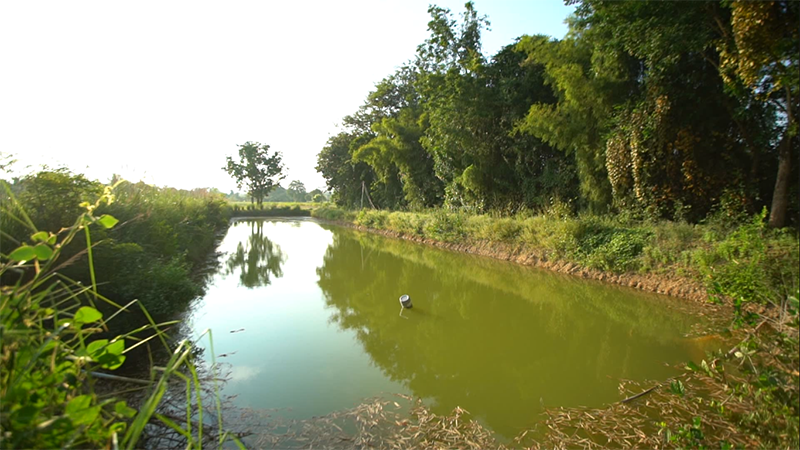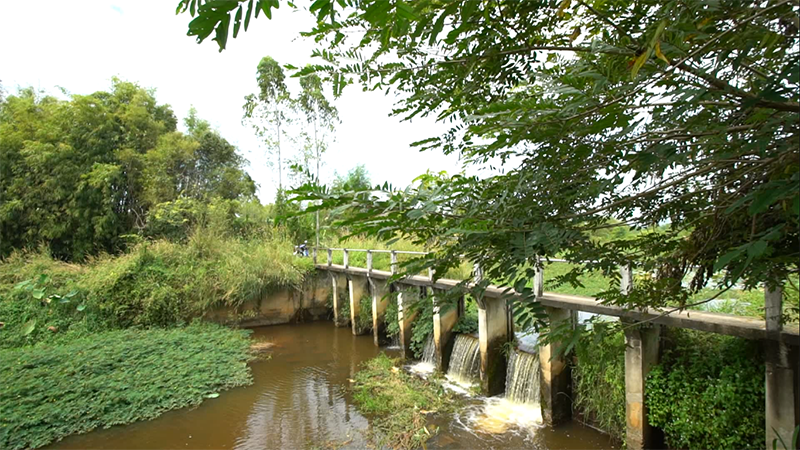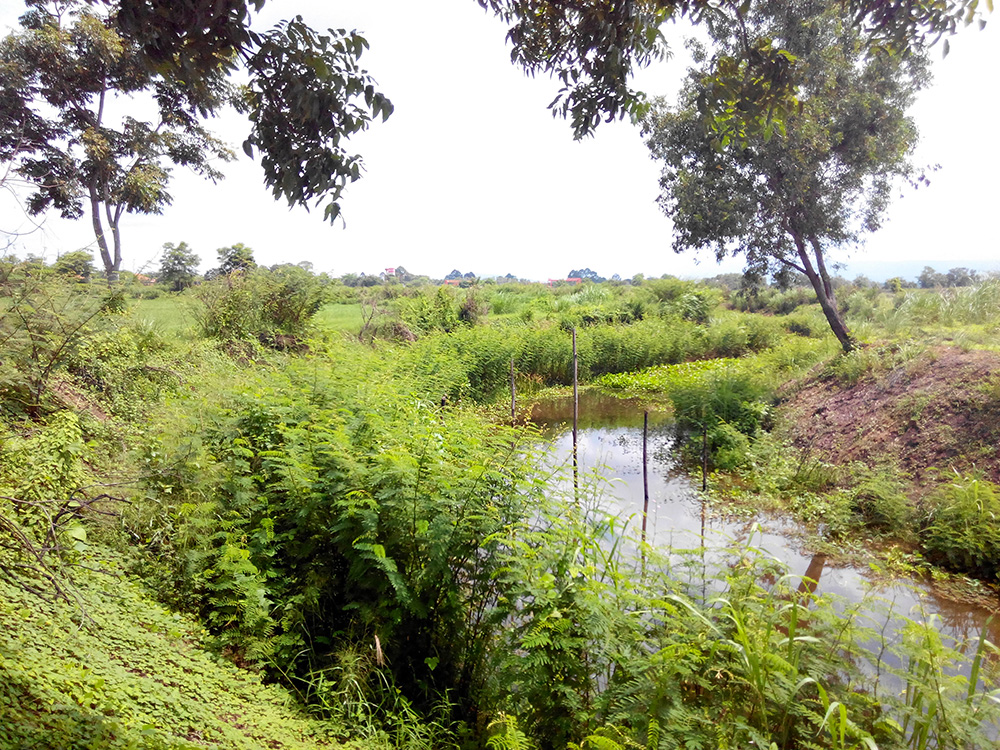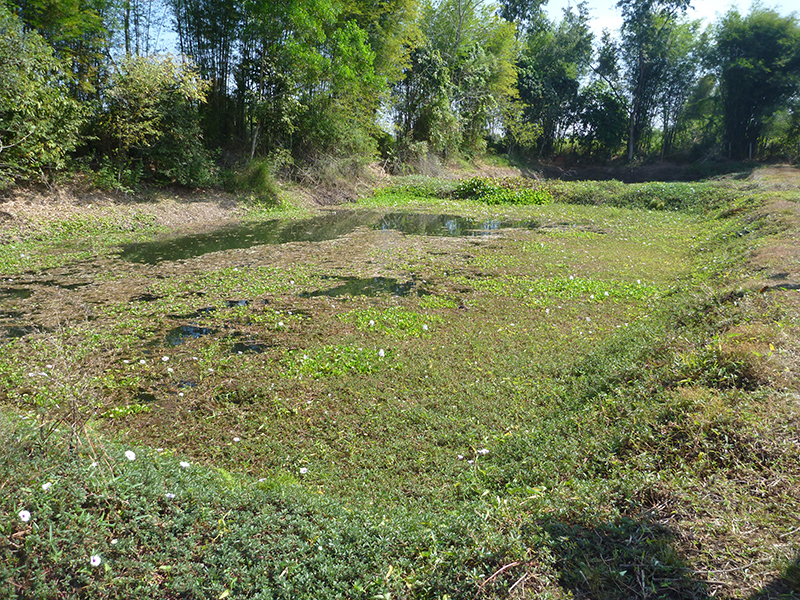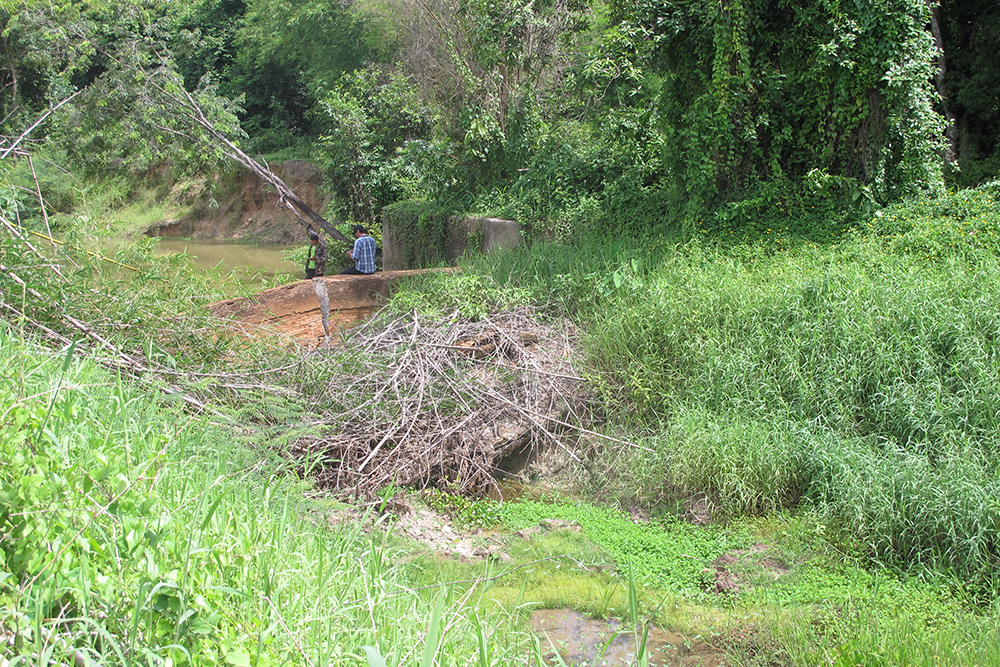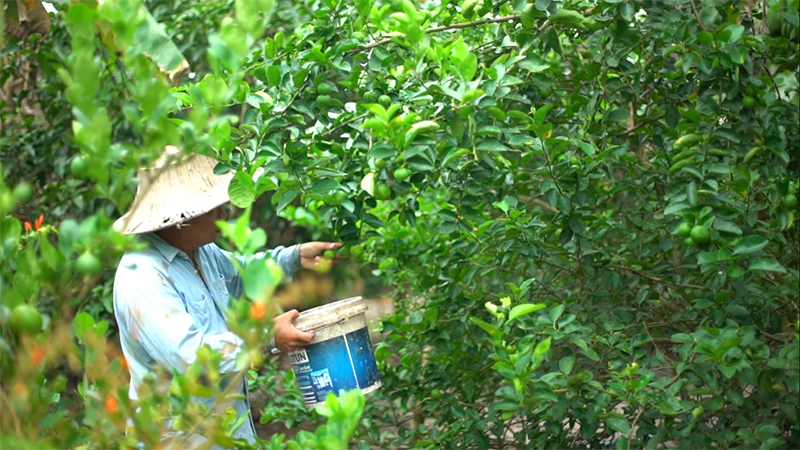Dong Khilek Community, Prachinburi Province
“Transforming into a Self-Reliant Community: Surviving the Drought with Sufficiency Economy”

When Water Problems Become Community Problems
Though Dong Khilek Community in Prachinburi Province is a basin with the forest on Khao Chipit that can supply water to the area, it lacked water during the dry season, while the rainy season brought floods to the village and the main road every year. The cause of these problems were due to the canals that had become shallow and neglected. In the past, locals in Dong Khilek grew rice, however, they shifted to growing sweet bamboo which is a cash crop instead. However, with this change, the villagers had to elevate their rice fields and thus got rid of the earthen dyke that was used to store water. The community then faced severe water shortages as cultivating the sweet bamboo required a large water supply and the crops died after a short while. Then, the villagers grew flowers instead but still struggled with the water supply. Though locals tried to remove sediments in the canals, they still faced water shortages, and the only way to secure enough water was to build a dam that would cost 153 million baht. Once they faced these problems, the villagers lacked income and their quality of life became significantly lower.
Combining Knowledge to Sustainably Manage Water Resources
Therefore, the people of Dong Khilek Community decided to join forces to find ways to manage water resources by themselves. They combined together different fields of knowledge and began with surveying the area and gathered information about the water flow direction including:
- Surveying the water flow direction and map out the direction for the entire subdistrict which allowed villagers to understand the water flow and enabled them to make plans for a suitable water storage area. The villagers also constructed a model for the subdistrict that enabled everybody to see how water would flow during discussions.
- Surveying the amount of water usage which revealed that the entire community used as much as 55,000 cubic meters of water per day. Thus, the villagers needed to source water from three sources in the village including groundwater from recirculated water and rainwater during the rainy season which ensured a year-round water supply.
- Constructing an “underground dam” to serve as a water storage pond for each family with narrow and deep ponds so that the water can be gathered in one place to increase its total volume.
- Repairing water gates, dams that elevate the water level, and check dams across the subdistrict to serve as water storage.
- Installing a solar cell water pump system with water supply from Khao Chipit Reservoir that flowed into the community’s plumbing system and into pipes leading to agricultural areas.Installing a solar cell water pump system with water supply from Khao Chipit Reservoir that flowed into the community’s plumbing system and into pipes leading to agricultural areas.
- Constructing a “shallow pond” that recirculated water from homes in which the water flowed through a closed-system pond, passing through soil, rocks, and sand as a natural filtering system and back into the shallow pond for reuse.
- Constructing an “underground water pond” which is a 10-meter-deep pond that stored rainfall that flowed from rooftops to ensure a year-round water supply
- Using a floating solar cell which lowered the rate of water evaporation and added oxygen volume to the water. The method allowed the community to efficiently manage energy production alongside water resources which ensured energy security for the community while villagers also gained access to alternative and environmentally-friendly energy sources.
- Shifting to an integrated farming system for consumption and trade in line with the New Theory Agriculture and live according to the Sufficiency Economy Philosophy. The community also strengthen its people with 12 community welfare funds.


จากความสำเร็จชุมชน สู่เครือข่ายลุ่มน้ำปราจีนบุรีที่เข้มแข็ง
ผลสำเร็จจากความร่วมมือที่เห็นผลลัพธ์จับต้องได้ และเปลี่ยนแปลงชีวิตให้ดียิ่งขึ้น
- ชุมชนมีแหล่งกักเก็บน้ำเพิ่มขึ้น มีแหล่งสำรองน้ำในพื้นที่เกษตรของตนเอง จากการกักเก็บน้ำในสระประจำแปลง และจากแหล่งสำรองน้ำ ได้แก่ ฝายกักเก็บน้ำ 25 ฝาย สระน้ำแก้มลิง 15 สระ และอ่างเก็บน้ำ 3 แห่ง เกิดกองทุนสระน้ำ มีสมาชิกรวม 1,200 ครัวเรือน ช่วยให้ชุมชนมีน้ำกิน น้ำใช้ สร้างรายได้จากการเกษตรได้ตลอดปี
- น้ำมีคุณภาพมากขึ้นจากน้ำไหลเวียนและเพิ่มปริมาณออกซิเจนในน้ำ เมื่อใช้โซลาเซลล์แบบลอยน้ำ เป็นแหล่งอาศัยของสัตว์น้ำ ชุมชนมีพลังงานทางเลือกและเป็นมิตรกับสิ่งแวดล้อม
- เกิดการเชื่อมโยงโครงข่ายน้ำและบริหารจัดการประตูน้ำร่วมกัน ทำให้มีปริมาณน้ำเพิ่มขึ้นมากกว่า 1,020,047 ลบ.ม. ฝายและอาคารน้ำล้นช่วยกักเก็บและรักษาระดับน้ำ ช่วยแก้ปัญหาน้ำท่วมน้ำแล้ง ครอบคลุมพื้นที่รับประโยชน์ 12,400 ไร่
- ชุมชนเข้มแข็งอย่างยั่งยืน มีกิน มีรายได้ จากผลผลิตทางการเกษตรแบบผสมผสาน ตามแนวทฤษฎีใหม่ที่เพิ่มขึ้น มีขายตลอดทั้งปี
ความสำเร็จครั้งนี้ ไม่หยุดอยู่แค่ชุมชนดงขี้เหล็กเท่านั้น ยังมีการขยายแนวคิดเรื่องการจัดการน้ำไปสู่แผนการจัดการลุ่มน้ำปราจีนบุรี เพื่อบรรเทาปัญหาน้ำท่วม น้ำแล้ง ซึ่งปัจจุบันมีเครือข่ายครอบคลุมถึง 2 จังหวัด 46 ตำบล สร้างความเข้มแข็งให้กับเครือข่ายลุ่มน้ำปราจีนบุรี อันมีที่มาจากความร่วมมือร่วมใจของทุกคนในชุมชน
Video
Brochure
No brochure yet.

